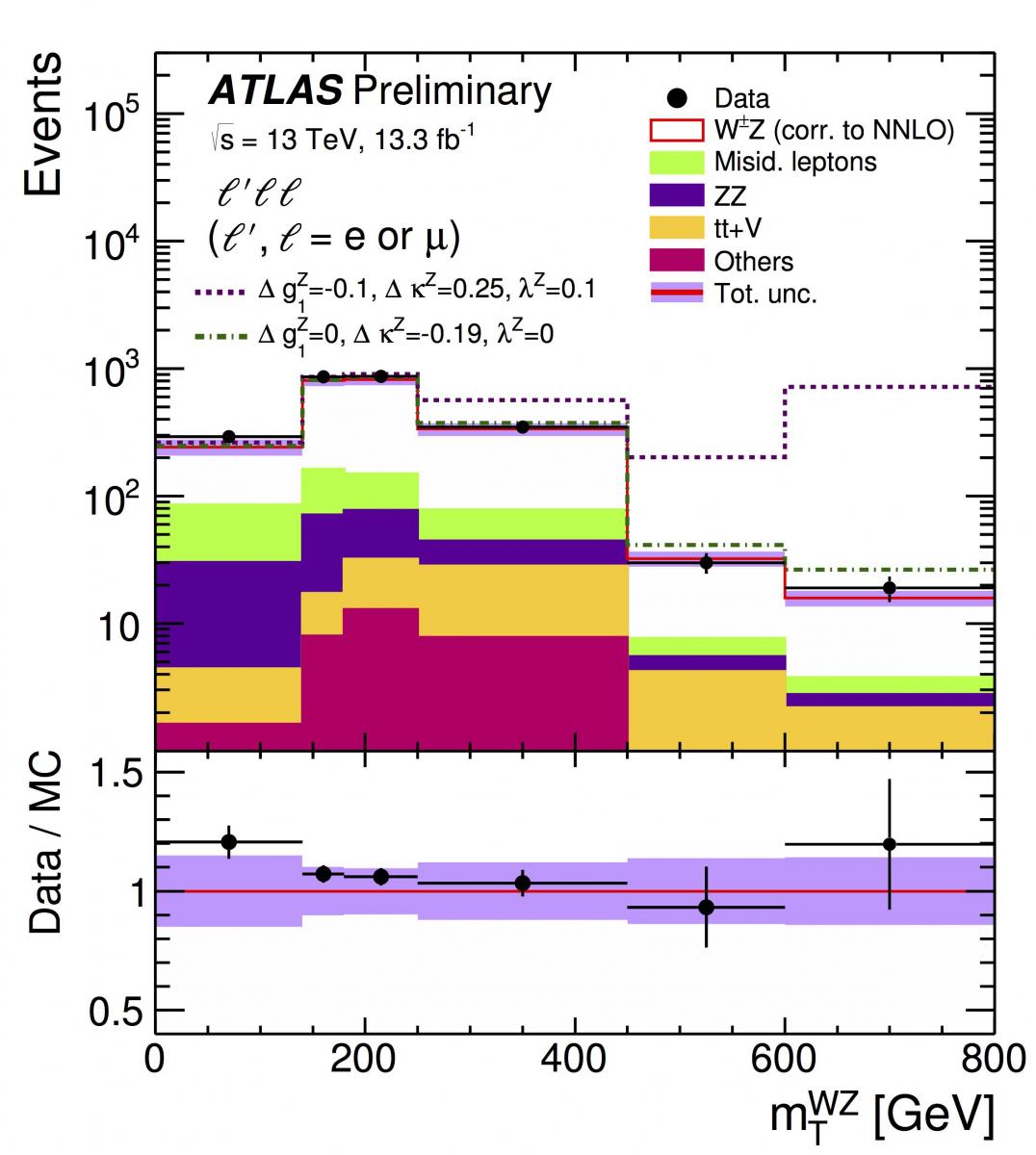Double the bosons, double the excitement
5 August 2016 | By

The W and Z bosons, although not possessing the catchiest of names, are two of the key building blocks of the Standard Model that best describes our understanding of particle physics. These particles were both discovered in the 1980s at CERN based on just a handful of candidate events. But in physics, discovering a new particle is just the beginning.
Thanks to the LHC, a much more powerful particle collider than those available in the 80s and 90s, ATLAS has produced over a billion W and Z bosons. This allows us to gain a much more detailed understanding of them. One important measurement at the LHC is the production of pairs of bosons in a single collision. The production of boson pairs is a much rarer process than the production of a single W or Z boson, and it gives us additional insight into the Standard Model. In particular, it helps us to understand how W/Z bosons interact with themselves and with each other.

ATLAS has performed measurements of boson-pair production using data from 13 TeV proton-proton collisions that began in 2015. The cross-section (a measure of the production frequency) of the WW boson pair production was measured and was compared to a previous measurement in 8 TeV collisions. The WW cross-section was found to be about twice as large at 13 TeV as at 8 TeV, in agreement with theoretical predictions. This is illustrated in Figure 1.
ATLAS has also performed new measurements of WZ production in 13 TeV collisions. The Standard Model not only predicts the overall cross-sections for boson-pair production, but it also predicts the kinematics of the bosons, e.g. how often they are produced with a particular W/Z transverse momentum or WZ invariant mass. ATLAS has measured the kinematics of WZ production and made a comparison with theoretical predictions. These measurements are sensitive to certain models of new physics that may produce enhancements in WZ production at large invariant mass, as shown in Figure 2. For now, no indications of new physics have been seen, but these new measurements have improved our sensitivity to new physics with respect to similar measurements made at 8 TeV.
Links
- Measurement of the W+W- production cross section in proton-proton collisions at a centre-of-mass energy of 13 TeV with the ATLAS experiment (ATLAS-CONF-2016-090)
- Measurement of W±Z boson pair-production in proton-proton collisions at 13 TeV with the ATLAS Detector and confidence intervals for anomalous triple gauge boson couplings (ATLAS-CONF-2016-043)
- Find all ATLAS 13 TeV results for 2016 summer conferences: https://twiki.cern.ch/twiki/bin/view/AtlasPublic/Summer2016-13TeV



